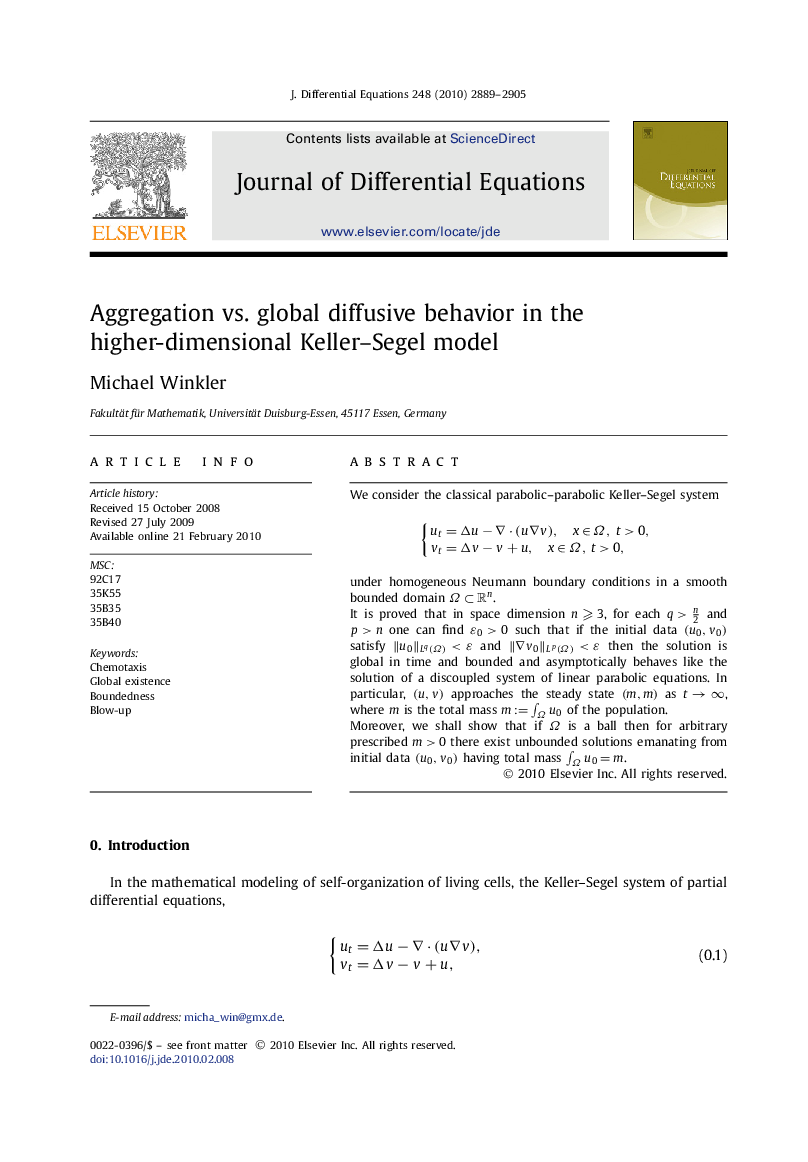| Article ID | Journal | Published Year | Pages | File Type |
|---|---|---|---|---|
| 4612211 | Journal of Differential Equations | 2010 | 17 Pages |
We consider the classical parabolic–parabolic Keller–Segel system{ut=Δu−∇⋅(u∇v),x∈Ω,t>0,vt=Δv−v+u,x∈Ω,t>0, under homogeneous Neumann boundary conditions in a smooth bounded domain Ω⊂RnΩ⊂Rn.It is proved that in space dimension n⩾3n⩾3, for each q>n2 and p>np>n one can find ε0>0ε0>0 such that if the initial data (u0,v0)(u0,v0) satisfy ‖u0‖Lq(Ω)<ε‖u0‖Lq(Ω)<ε and ‖∇v0‖Lp(Ω)<ε‖∇v0‖Lp(Ω)<ε then the solution is global in time and bounded and asymptotically behaves like the solution of a discoupled system of linear parabolic equations. In particular, (u,v)(u,v) approaches the steady state (m,m)(m,m) as t→∞t→∞, where m is the total mass m:=∫Ωu0m:=∫Ωu0 of the population.Moreover, we shall show that if Ω is a ball then for arbitrary prescribed m>0m>0 there exist unbounded solutions emanating from initial data (u0,v0)(u0,v0) having total mass ∫Ωu0=m∫Ωu0=m.
